7.5 Common farming, grazing, and forestry practices deplete soils
In his 2005 best-
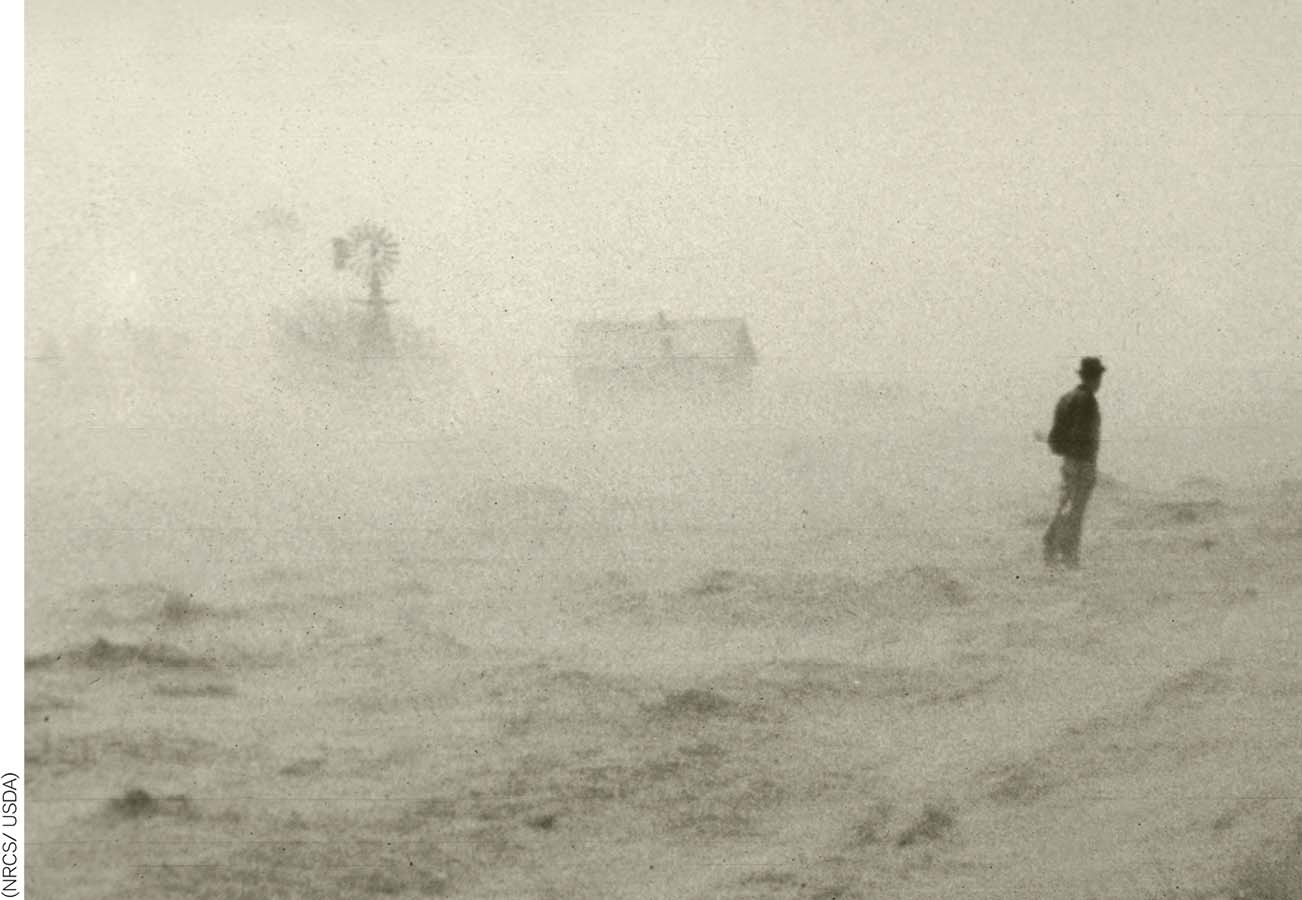
Soil Loss by Erosion
Erosion is a natural land-

How might studies of undisturbed natural ecosystems help design sustainable agricultural systems?
Losses of topsoil to erosion can be broken down into losses of mineral particles, organic matter, or nutrients. In one landmark 1992 study, Cornell University researchers reported that the 17 metric tons of topsoil lost per hectare in the United States contain an average of approximately 14.5 metric tons of mineral soil, 2 metric tons of organic matter, and nearly 0.5 metric ton of inorganic nutrients (Figure 7.13).
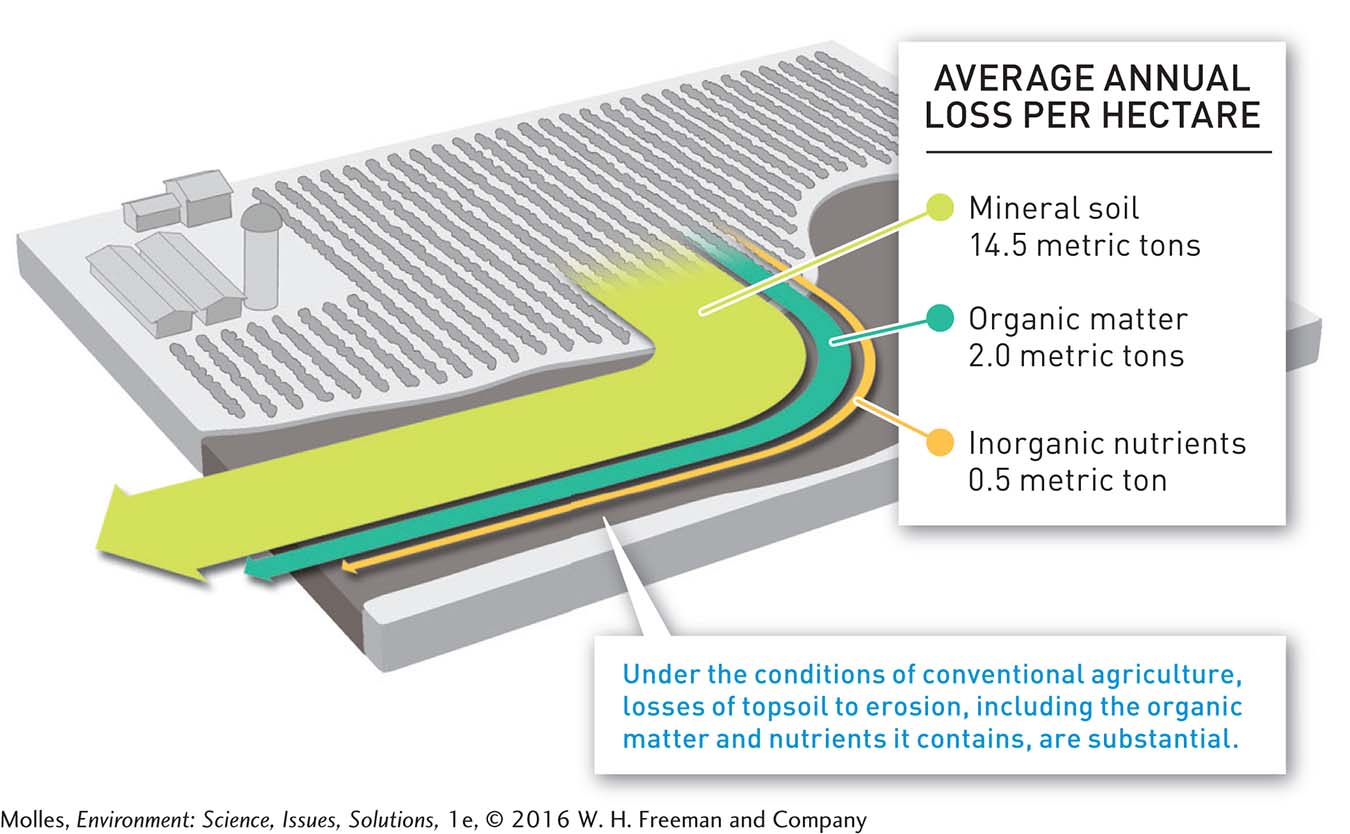
Those nutrients include potassium, phosphorus, and nitrogen, which are critical to agriculture and to maintaining soil fertility. Most replacement potassium and phosphorus comes from mining activities, which have a significant impact on the environment and require substantial amounts of fossil fuels. In contrast, replacement nitrogen is derived from the atmosphere in a process that also requires substantial use of fossil fuels (through industrial synthesis). The losses of soil organic matter can also reduce farm productivity because the crumblike structure of soil organic matter is key to promoting the infiltration of water, aeration, retention of nutrients, and resistance to erosion.
Conventional-Tillage Agriculture
conventional-
Soil erosion is a potential problem associated with farming and ranching, and each has unique challenges. Conventional-
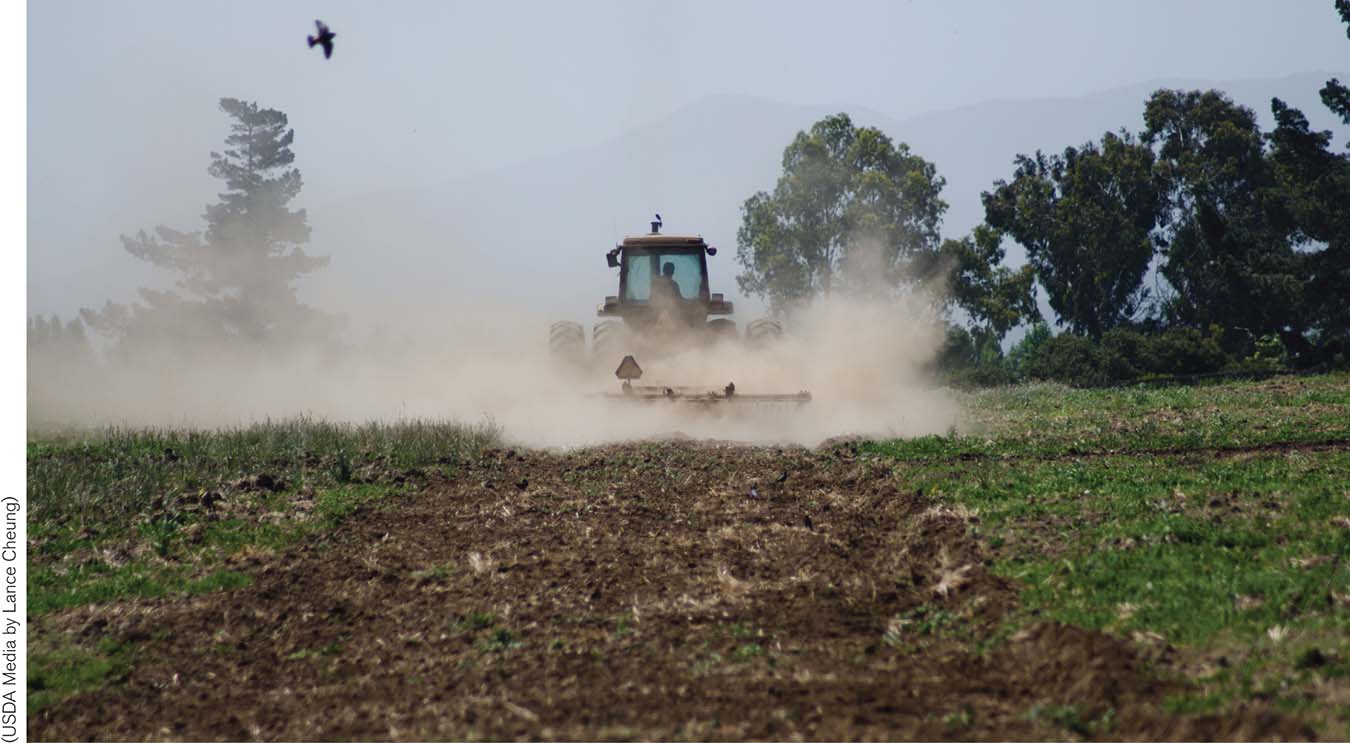
Overgrazing of Rangelands and Desertification
Grazing by livestock causes erosion in the same way as conventional tillage, by reducing plant cover and disturbing topsoil. Livestock are generally heavy animals that consume a lot of plant material and compress soils with their hooves. Overgrazed rangelands may lose up to 100 tons of soil per hectare per year. Rangelands in hot, dry regions are particularly sensitive to erosion because they naturally support sparse plant cover, which can be easily overgrazed. Severe erosion can occur during torrential rains and flash floods (Figure 7.15).
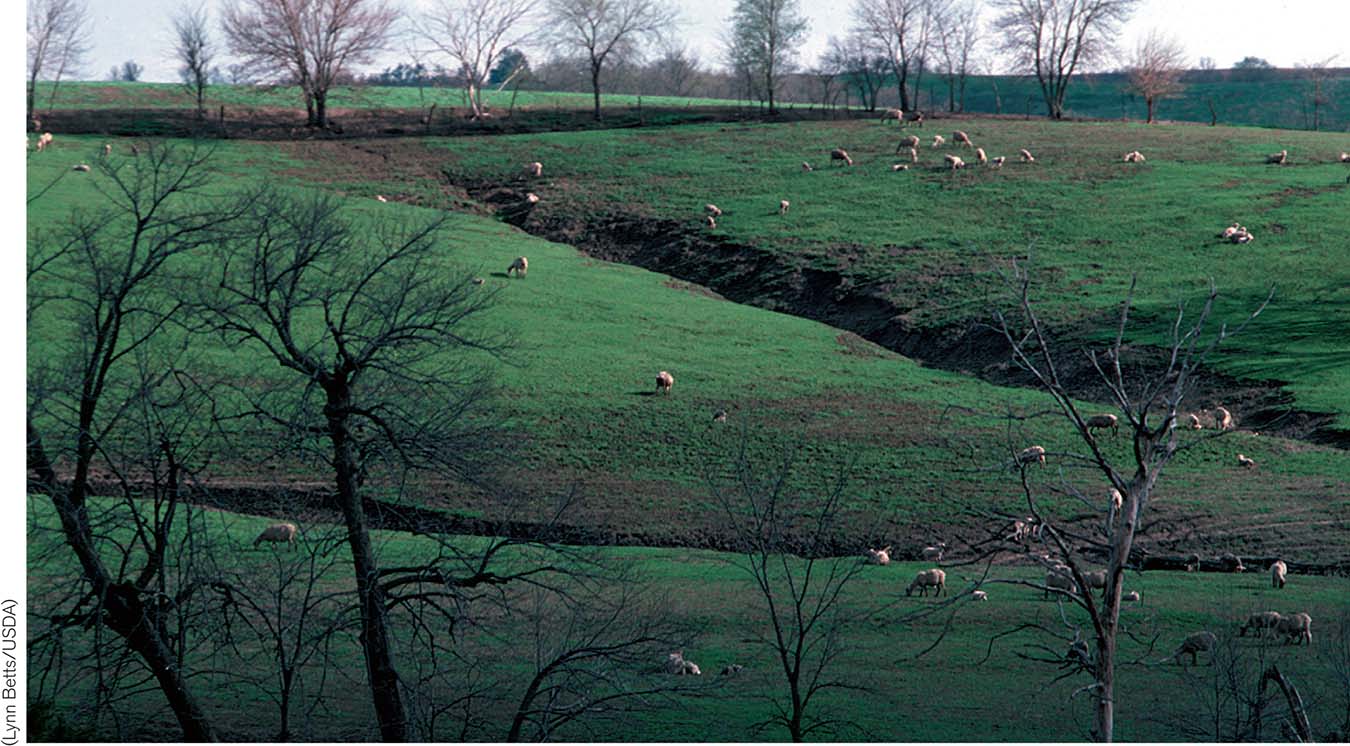
desertification A process of degradation of once fertile lands to a desertlike condition of reduced plant cover and primary production.
The impacts of overgrazing in arid and semiarid rangelands commonly lead to desertification, a process of degradation of once fertile lands to a desertlike condition of reduced plant cover and primary production. Desertification is a major problem in central Asia, much of China, and of northern Africa, particularly in the Sahel region (Figure 7.16).
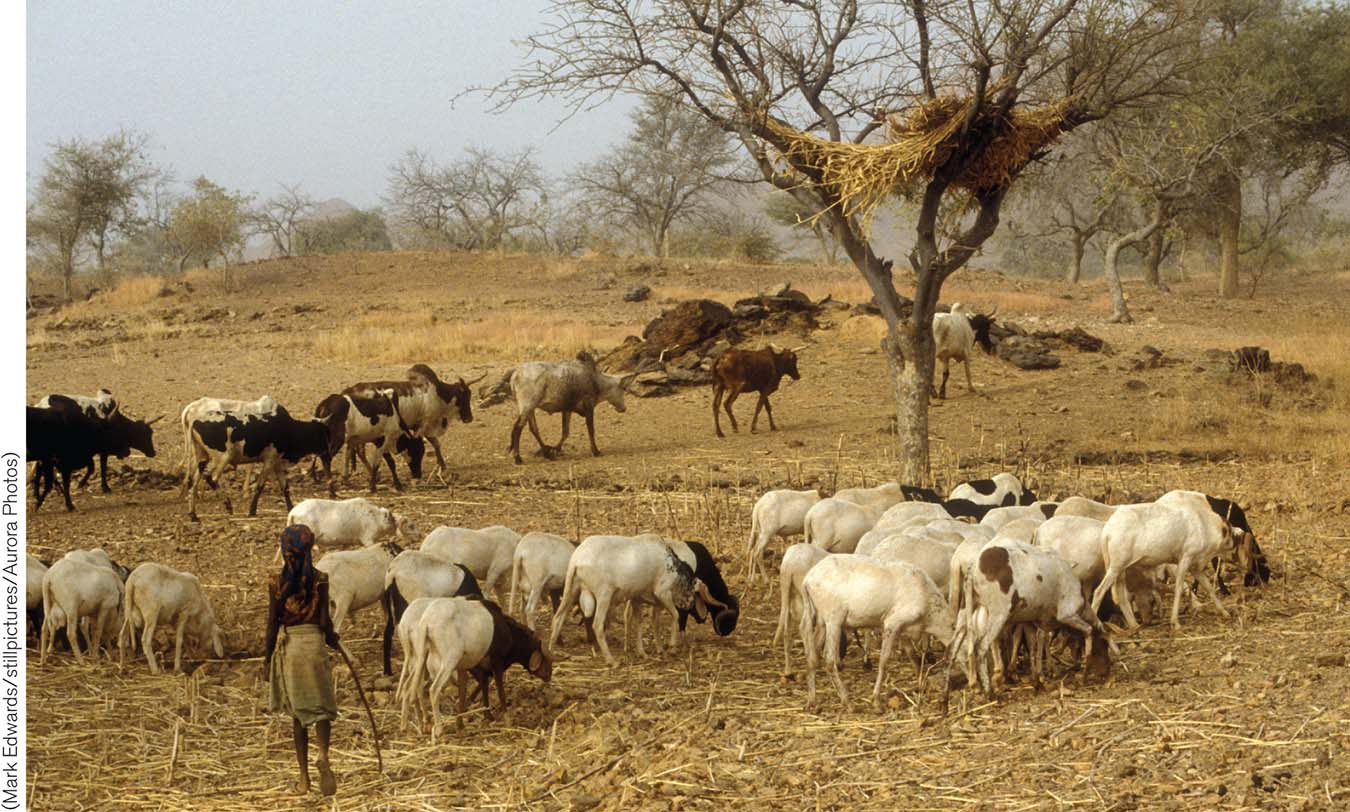
Think About It
How might a soil profile on a farm in a region that would naturally support either temperate grassland (or temperate forest) show evidence of soil erosion? (See Figure 7.6.)
Why are the soils of mountain landscapes more subject to erosion? (Hint: What force besides water and wind power is especially influential in mountain landscapes?)
Why haven’t the soils of the tundra and taiga biomes been subject to higher levels of erosion, compared with the soils of other biomes, at least to this point in their history?